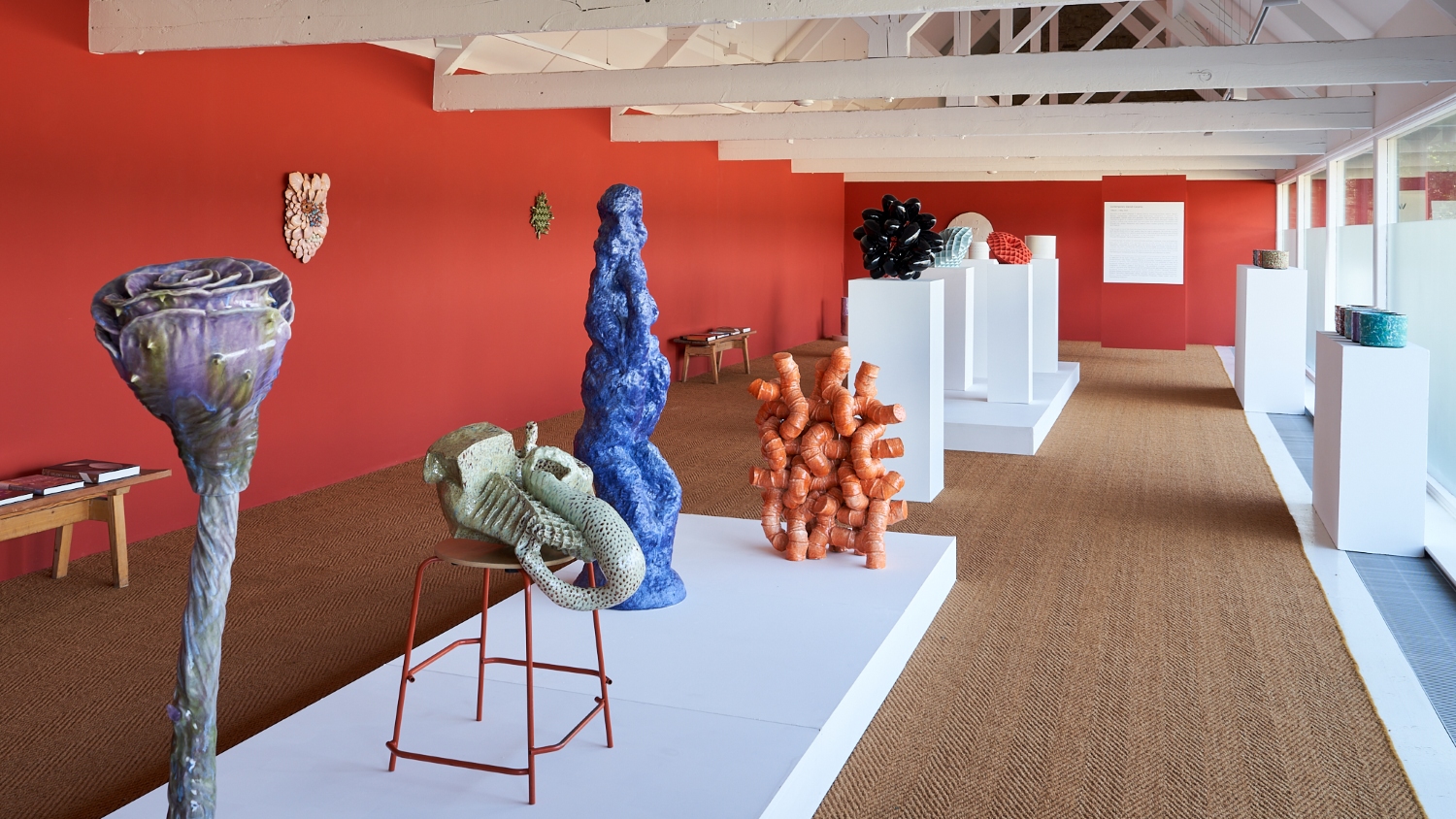
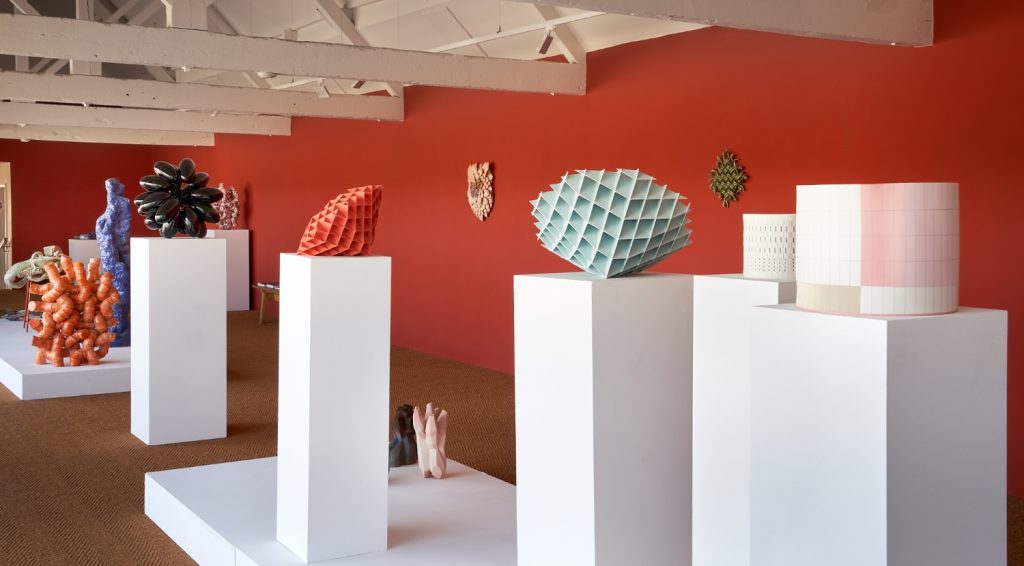
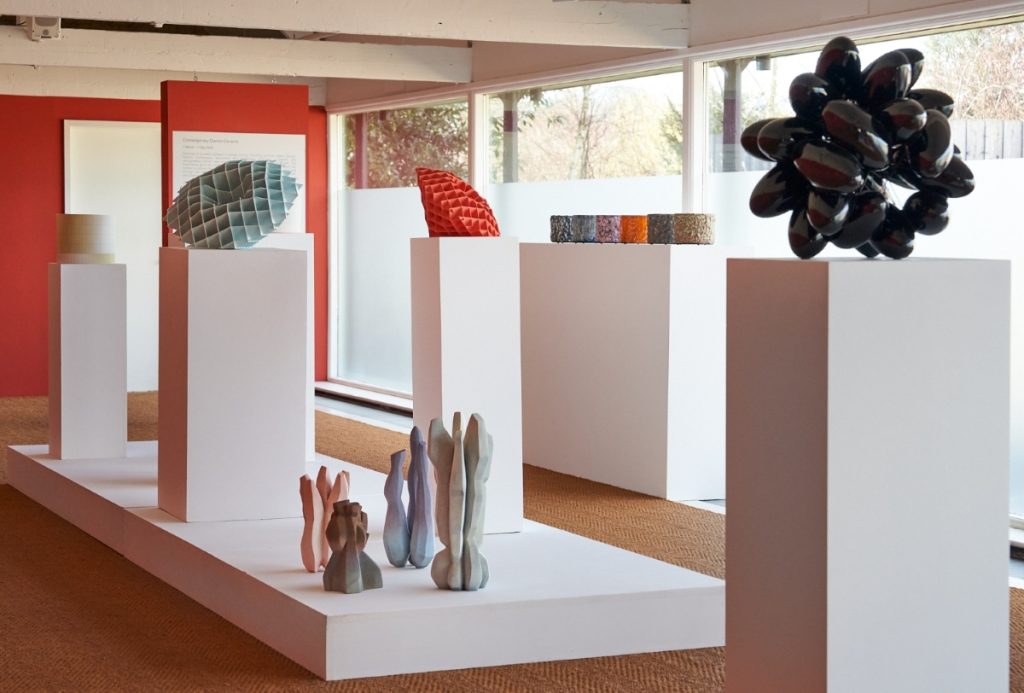
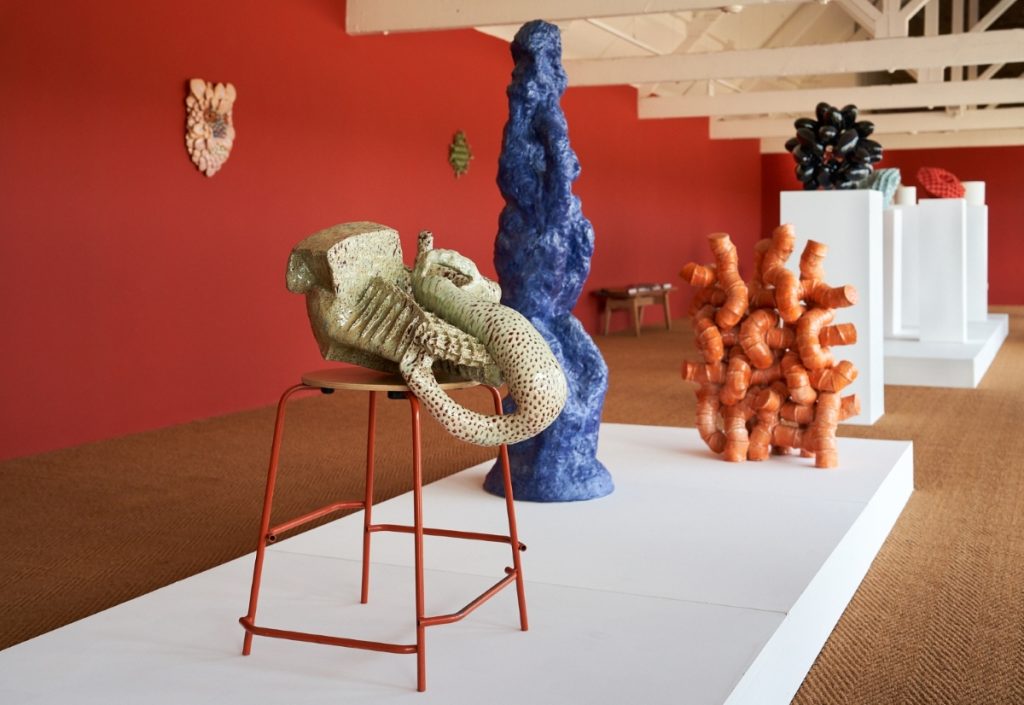
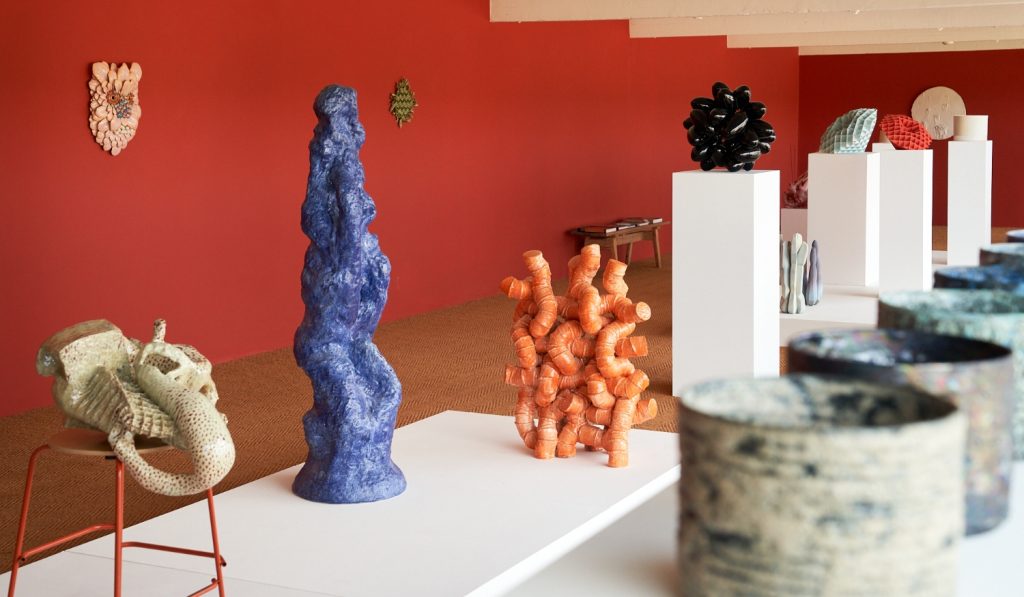
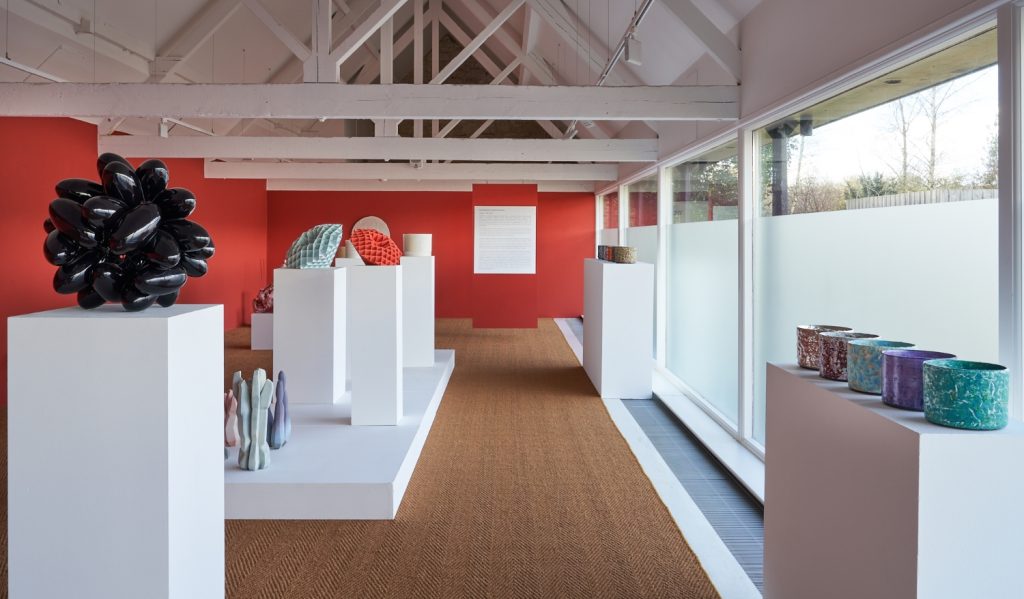
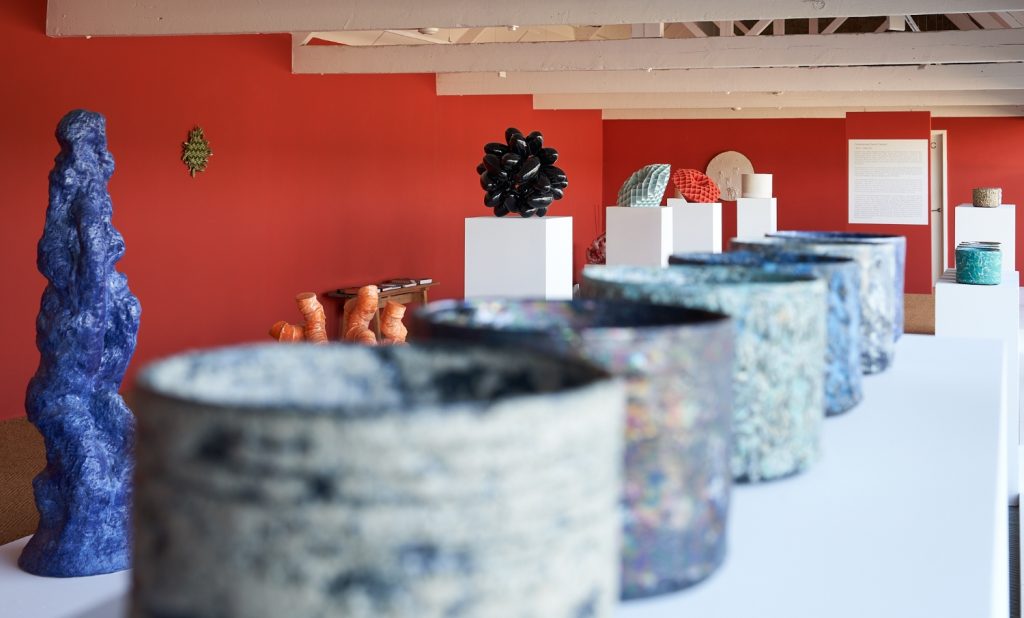

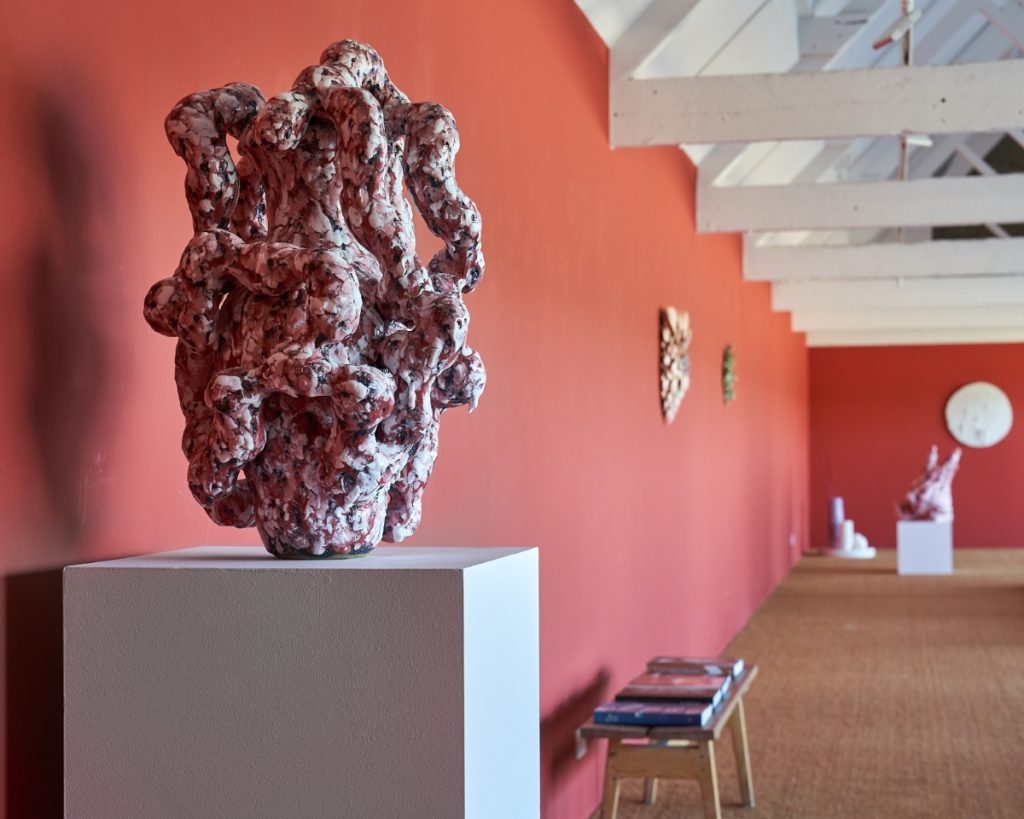
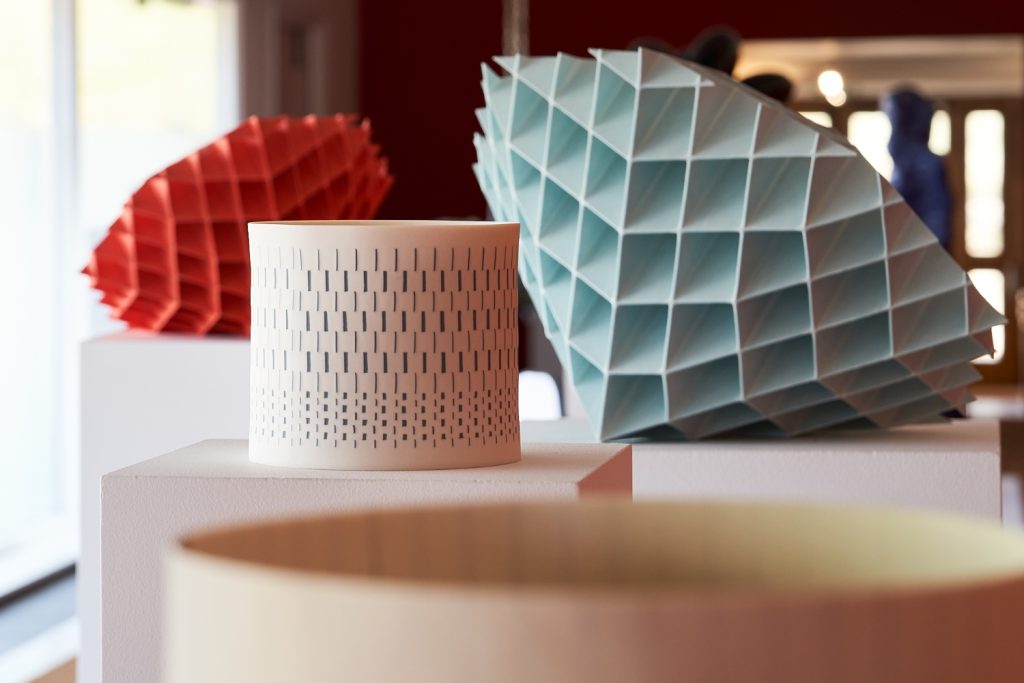
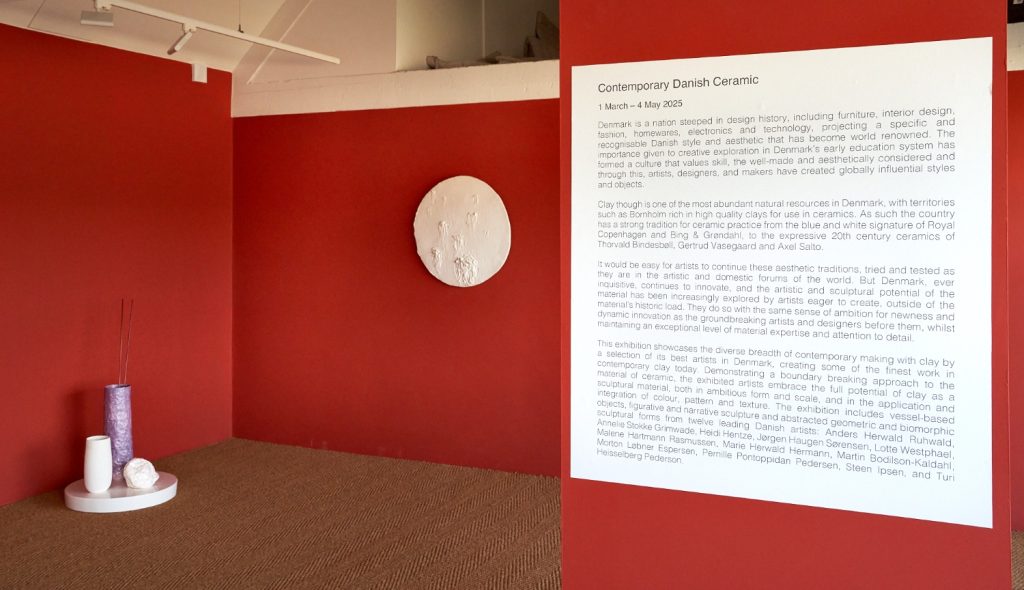
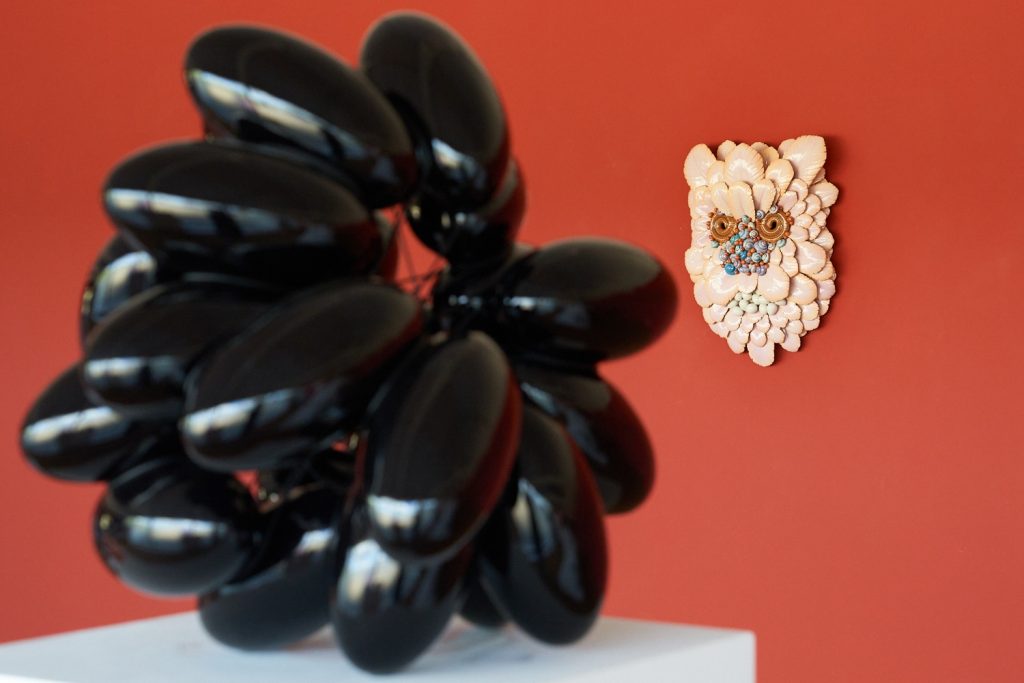
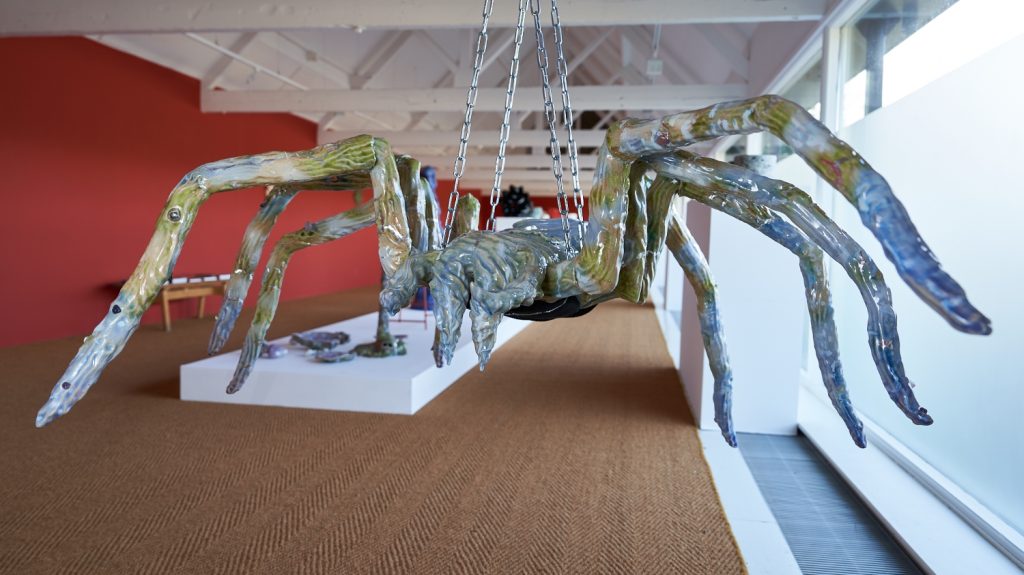
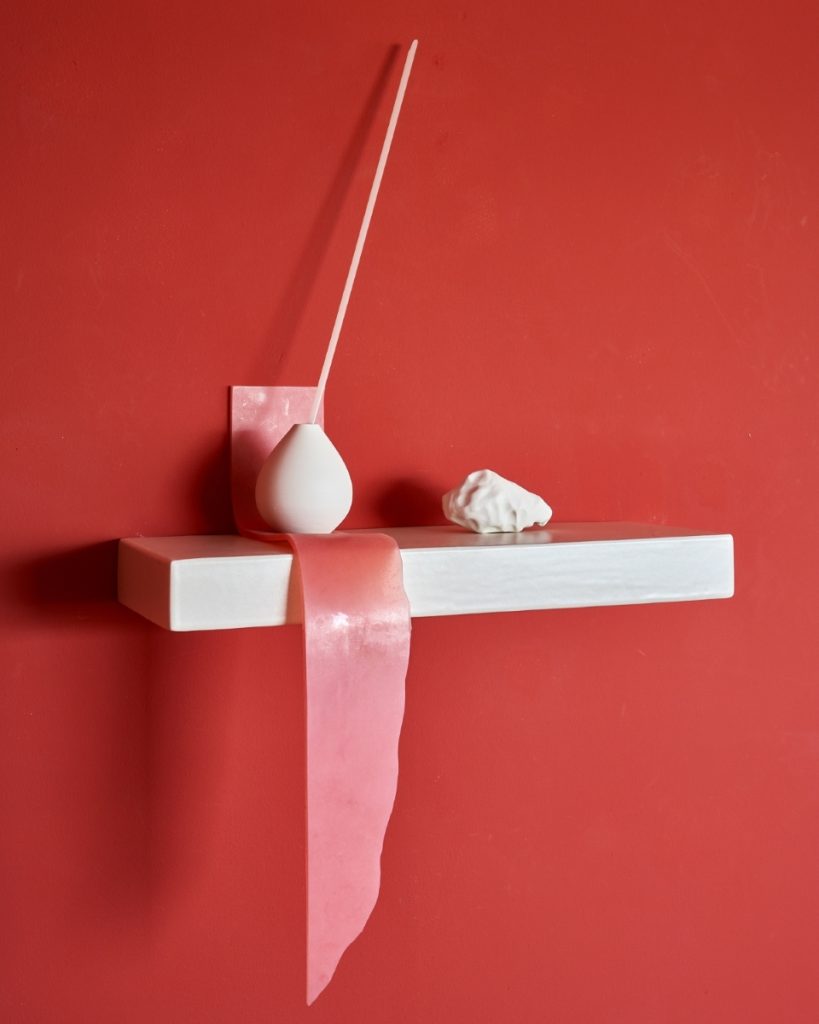
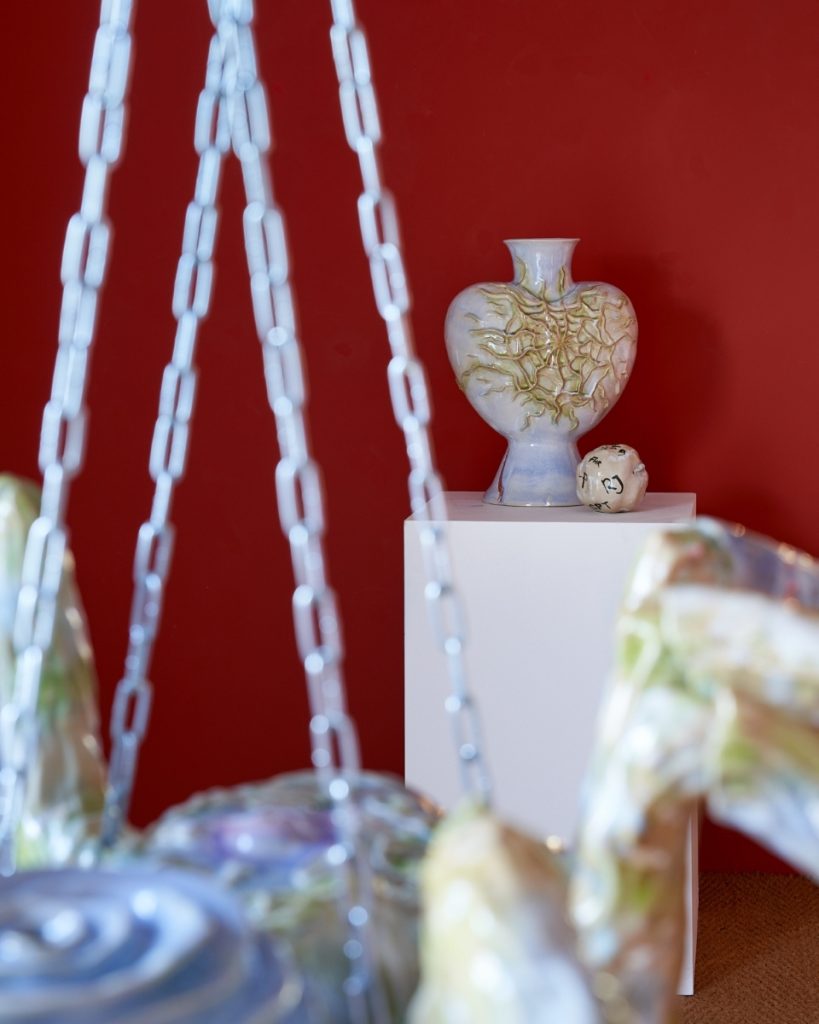
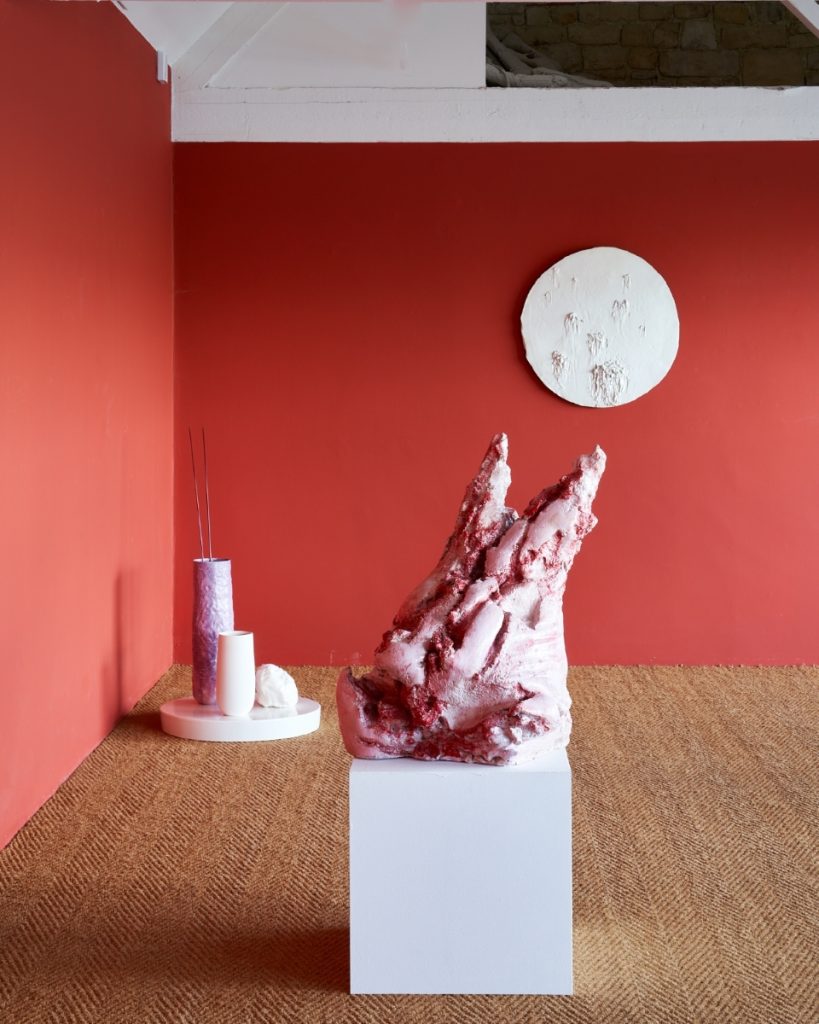
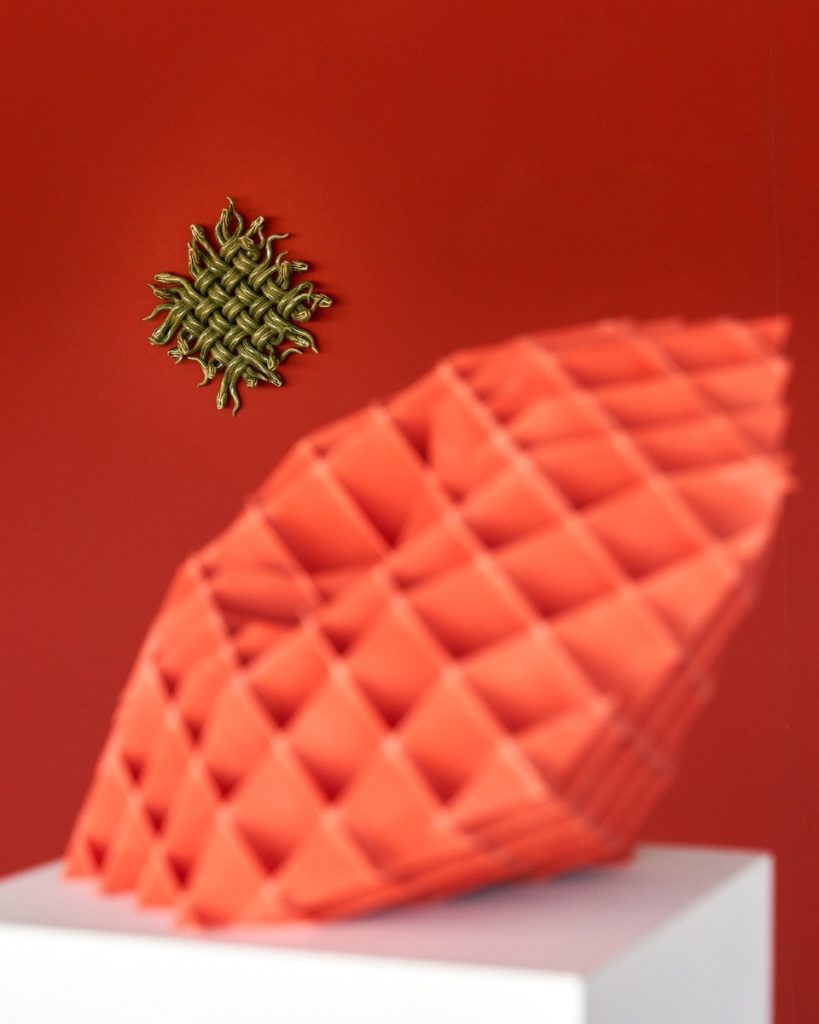
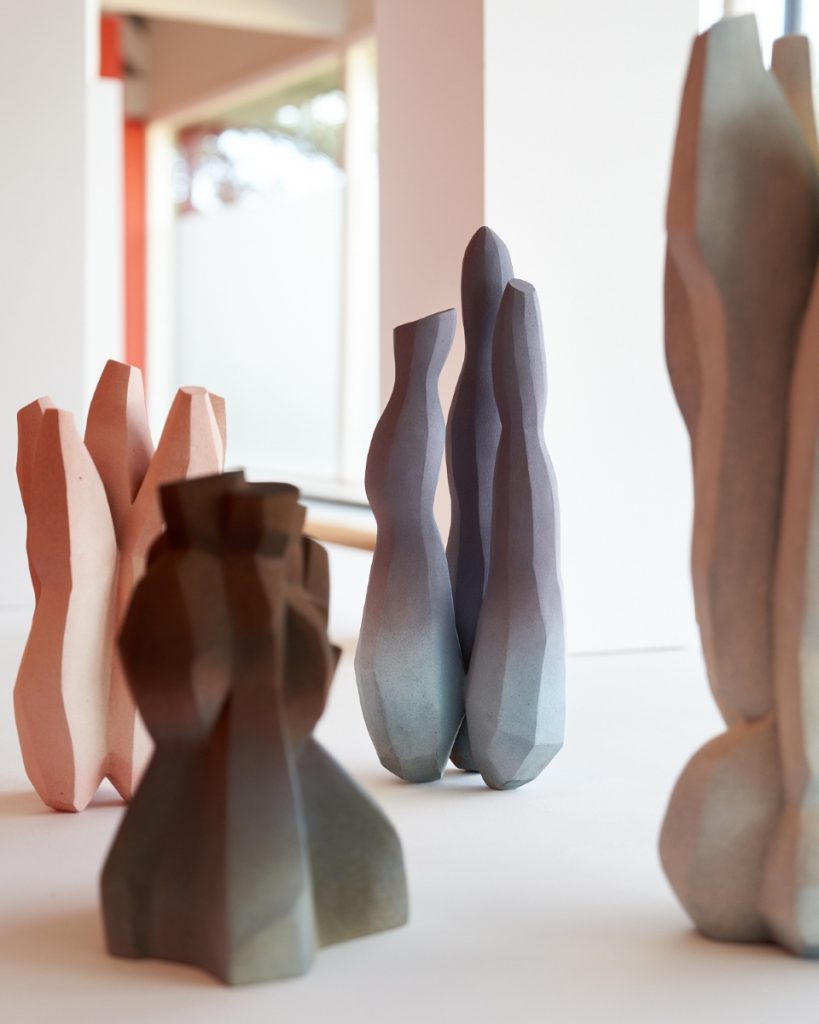
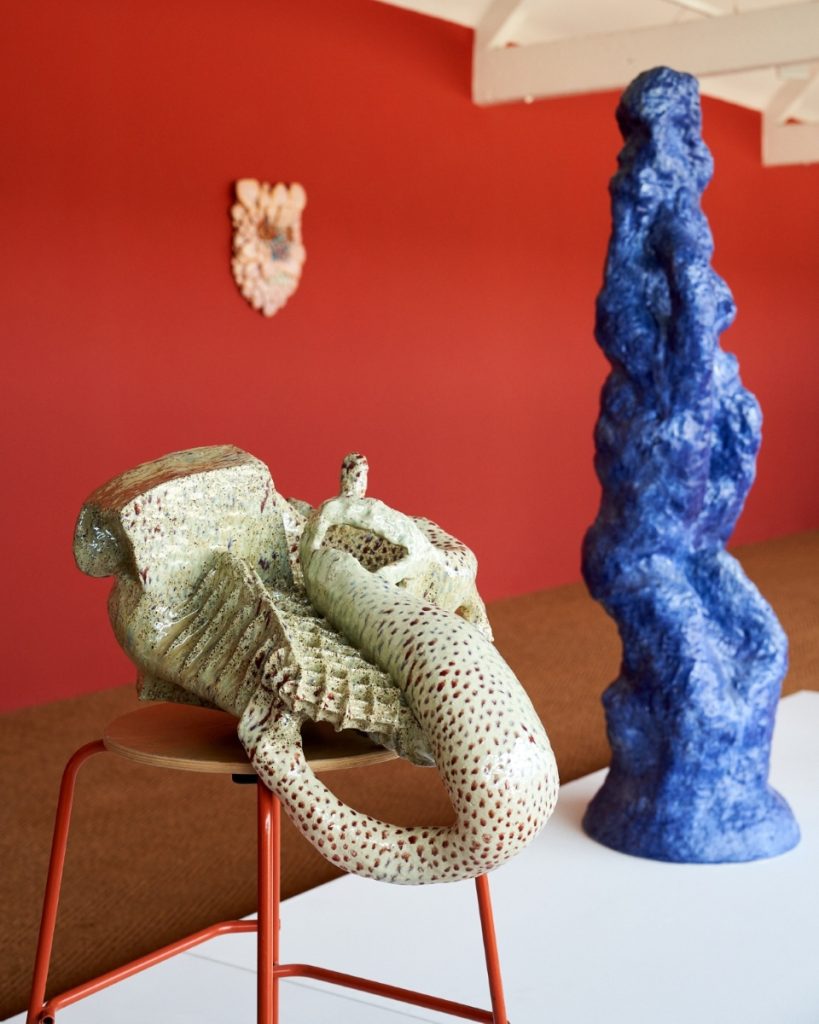

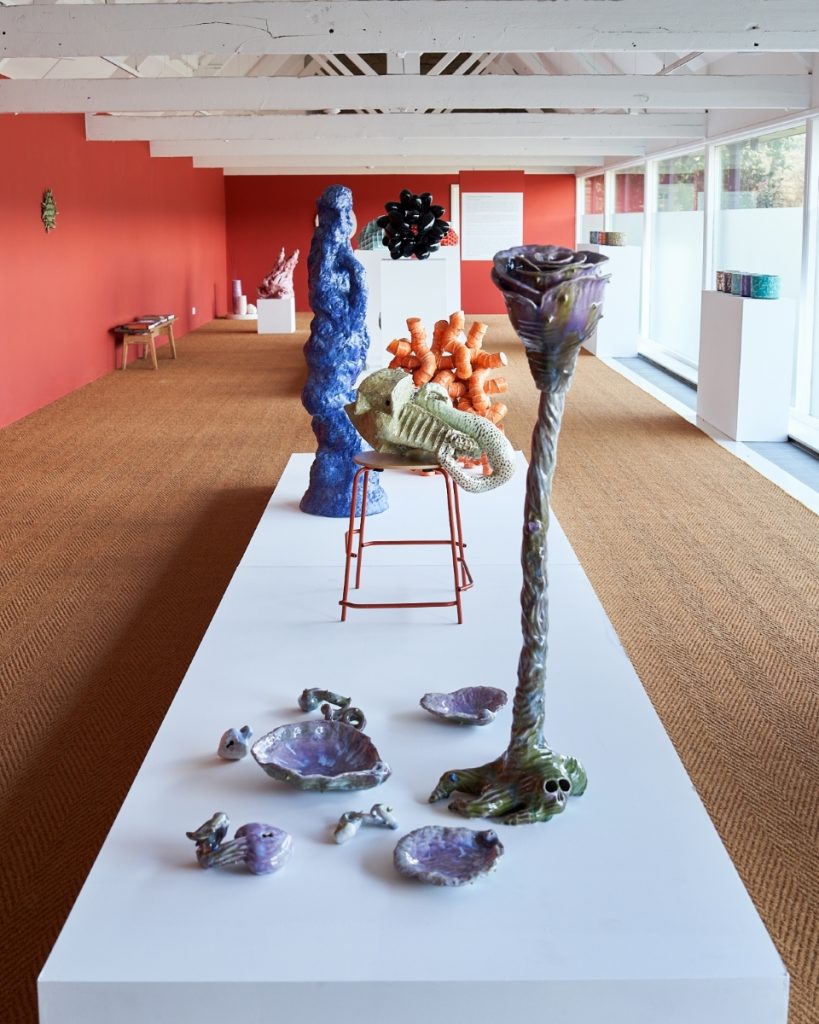
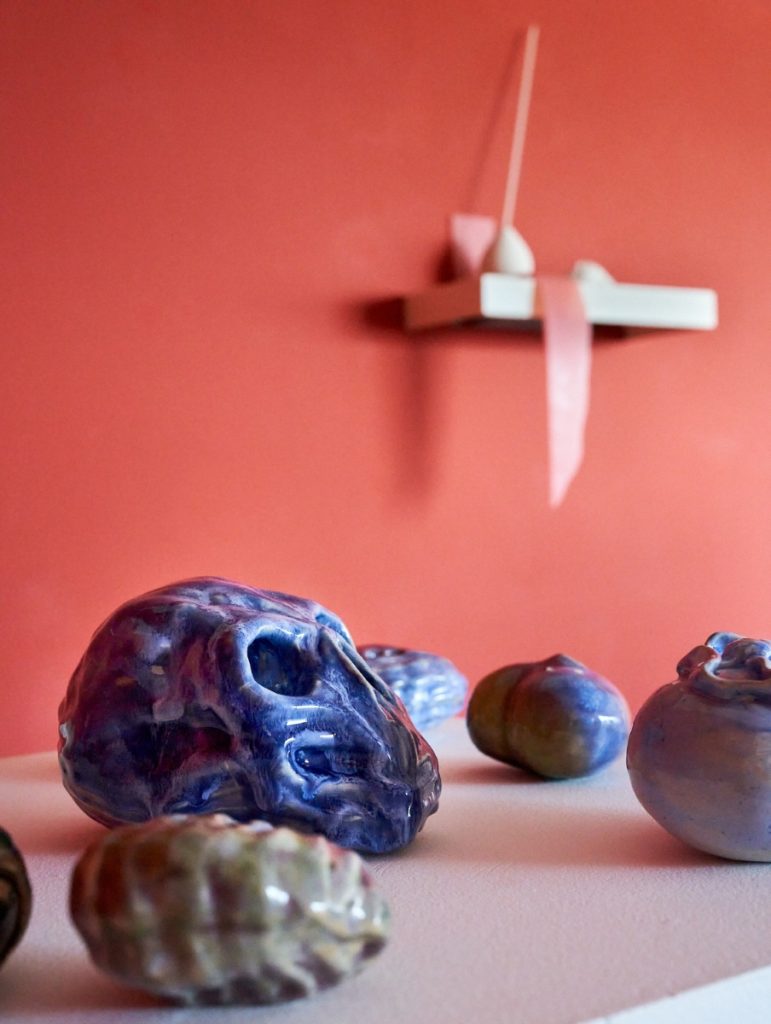
Contemporary Danish Ceramic is on view at Messums West, Tisbury
March 1 – May 4, 2025
Denmark is a nation steeped in design history, including furniture, interior design, fashion, homewares, electronics and technology, projecting a specific and recognisable Danish style and aesthetic that has become world renowned. Clay though is one of the most abundant natural resources in Denmark with territories such as Bornholm rich in high quality clays for use in ceramics, as such the country has a strong tradition for ceramic practice from the blue and white signature of Royal Copenhagen and Bing & Grøndahl, to the expressive 20th century ceramics of Thorvald Bindesbøll, Gertrud Vasegaard and Axel Salto.
It would be easy for artists to continue these aesthetic traditions, tried and tested as they are in the artistic and design forums of the world. But Denmark, ever inquisitive, continues to innovate, with artists creating and expressing new ideas in clay whilst maintaining a distinctly Danish respect for aesthetics and technical excellence. This exhibition showcases the diverse breadth of contemporary making with clay in Denmark today. Demonstrating a boundary breaking approach to the material, the exhibited artists evidence the full potential of clay as a sculptural material, both in ambitious form and scale, and in the application and integration of colour, pattern and texture. The exhibition includes vessel-based objects, figurative and narrative sculpture and abstracted geometric and biomorphic sculptural forms from twelve leading Danish artists:
Anders Herwald Ruhwald presents Weather Thinker, a bright blue abstract form standing nearly five feet high. This work represents the essential interaction of artist’s hand and material, created through months of immersion in the metamorphic capacity of the clay. Ruhwald’s practice acknowledges the deep continuum of ceramic, its history and traditions, evinced in the artist’s second-nature skill with the material, but his effort is directed towards the conceptual categories of ceramic objects, intending to challenge and provoke intrigue. Viewers are encouraged to conjure their own interpretations and conclusions.
Martin Bodilsen Kaldahl’s sculptures have a duality that fills the viewer with intrigue. They are writhing and flowing forms, dancing through space yet confined to an invisible boundary, simultaneously they are industrial constructions of tubular forms without the uniformity expected. Despite the frankness of the presentation – the sculptures are intended with no narrative, focussed on form, structure, texture and colour – they evoke feelings of uncertainty. The irregularly fused junctions suggest unnatural growth and abruptly stopped tendrils indicate some sort of preventative measure was taken.
Annelie Stokke Grimwade presents a new series of sculptures made in residency at the V&A Wedgewood Collection. Stokke Grimwade examines Josiah Wedgwood’s complex legacy and the contradiction of his anti-slavery campaigns against the extractive colonial systems and exploitative labour that aided his industrial advancements. She describes how this is mirrored in today’s rapid expansion of green technologies and the exploitation of artisanal miners worldwide. Her research culminated in a series of otherworldly sculptures and an interactive performance that explore motifs including the spider, web, heart, rose, drip, and the silver lining—each a metaphor for interconnectedness and resilience, conveying solidarity through collective labour, symbolism, and mythological storytelling.
Pernille Pontoppidan Pedersen’s amorphic form Soft tool / connecting stool combines an unrecognisable and undefinable sculpted clay character, something certainly alive, with a utilitarian and overtly familiar ready-made stool. This plurality is mirrored in her artistic intension, to bring together in kinship and examine our interspecies relationships. The artist’s feminist themes, drawing often on issues of motherhood and abortion, drives a new future for ceramic against formulaic norms.
Heidi Hentze presents two new porcelain diamonds that defy the practical law of ceramic construction. Formed from tissue thin slabs of coloured porcelain, Hentze’s three dimensional geometries demonstrate her incredible skill and command of material. Inspired by architecture and Kirigami (a variation of origami, in which the paper is cut as well as folded, resulting in a three-dimensional design that stands away from the paper surface) these works have an illusory quality, as if not possible in clay.
Lotte Westphael’s precarious porcelain vesselsare a testament to patience and skill. Meticulously blended clays are mosaiced together into paper thin vessel walls, she describes “The extremely thin and fragile porcelain and its movement during the process, seems like a sketch of paper folded around itself.” Overtly graphic, Westphael’s vessels are inspired by the gridded drawings and paintings of Agnes Martin and the linear textile weavings of Anni Albers.
Morten Løbner Espersen creates vessels, he says “The vessel is my object of choice. An archetypical form I’ve spent 20 years making variations on, from the functional and modest, to the aesthetic and sumptuous.” The vessel form is perfectly circular with an entirely flat base and perpendicular walls, the silhouette is simple, clean, and for some reason, very Danish. The artist refers to these as ‘Vacui’, Latin for ‘of the vacuum’, referencing the characteristic empty space inside. Thickly glazed in three or four or more layers, the surface becomes an exaggeration of form. Espersen distorts these works further in a complementary series entitled ‘Horror Vacui’, or ‘fear of emptiness’. A reference to classical ceramics, a more typical vase form is set amongst writhing tendrils, that empty space no longer accessible or fillable.
Steen Ipsen presents a new characteristic ‘blobject’ form of hand-built gloss-black glazed elliptical forms, strung together with black PVC strands. Despite the form’s sleek and refined aesthetic, the sculpture has a biomorphic feel, as if something discovered only under a microscope, the PVC binding adds tension that contributes a sense of throbbing movement.
Malene Hartmann Rasmussen’s ceramics are narrative driven, sculptural works of caricatured flora and fauna, both recognisable and fantasy that tell us stories old and new. Her works draw from imagination, mythology and folklore to produce tableaus of creatures that appear playful but on closer inspection have a darker narrative and perhaps a cautionary tale to tell. Hartmann Rasmussen says: “I try to create a place beyond reality, a deceitful echo of the real world, that bends the perception of what is real … Initially the viewer may, mistakenly, be drawn to my figures thinking them to be toys; however closer examination reveals their rather darker narrative.”
Jørgen Haugen Sørensen’s works have a dark narrative that speaks to the violence of human nature. Two sculptural works here have the unmistakable mark of the artist’s working, the clay formed by pinching and clawing hands that belies the ferocity of the narrative.
Marie Herwald Hermann’s assemblages evoke Morandi-an still lives with a Danish refinement. Recognisable forms, vases and bowls, are gathered together with amorphous organic clay lumps in tableaus that sit atop shallow wall shelves or minimal floor plinths. Rendered mostly in white, the palette’s tranquillity is interrupted by an occasional splash of colours, in a purple vessel or orange torn glass streamer. The works reference the domestic and the decorative domains of ceramic whilst remaining strictly sculptural.
Turi Heisselberg Pederson presents a collection of vessel forms that manifest the artist’s strong connections to culture and nature through the use of clay. Her expressive forms, gathered together in small conversational groups, explore texture, structure, volume and movement through an organic abstraction of the vessel form. Her tableaus allow the contemplation of the singular object whilst allowing reciprocal relationships to develop through proximity, in turn we muse on our own relationship to the object.
The exhibits here demonstrate the importance given to creative exploration in Denmark’s early education system. It has formed a culture that values skill, the well-made and aesthetically considered and through this, designers, makers and artists have created globally influential styles and objects, still present in contemporary visual culture. Typically, clay and ceramic have been a medium and material associated largely with craft and design, and distantly to architecture. However, the artistic and sculptural potential of the material has been increasingly explored by artists eager to create, outside of the material’s historic load. They do so with the same sense of ambition for newness and dynamic innovation as the groundbreaking designers and artists before them, whilst maintaining an exceptional level of material expertise and attention to detail.
Contemporary Danish Ceramic is supported by the Danish Art Foundation. The exhibition is curated by Natalie Baerselman le Gros.
Contact
west@messums.org
Messums West
Place Farm, Court St
Tisbury, SP3 6LW
United Kingdom
Photos courtesy of Messums






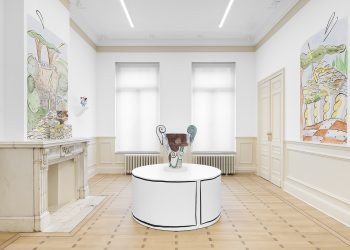
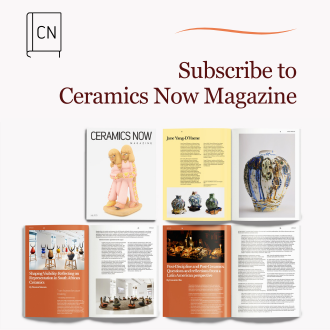


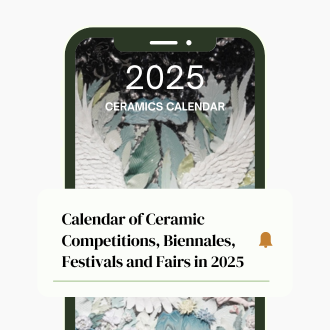

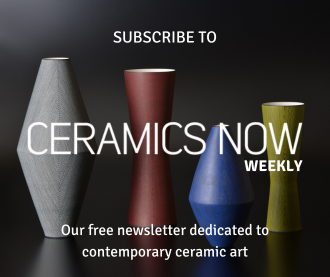


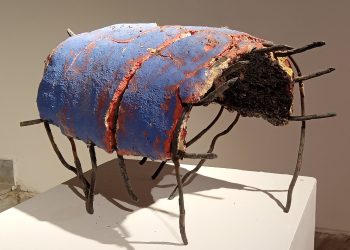





Comments 1